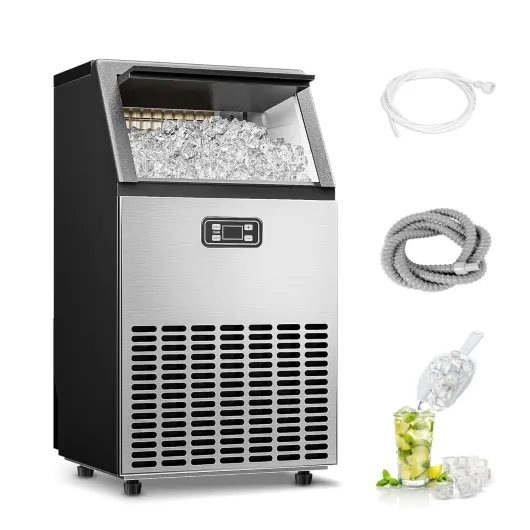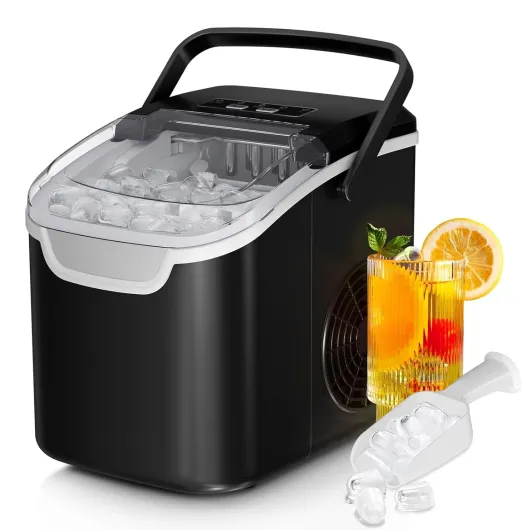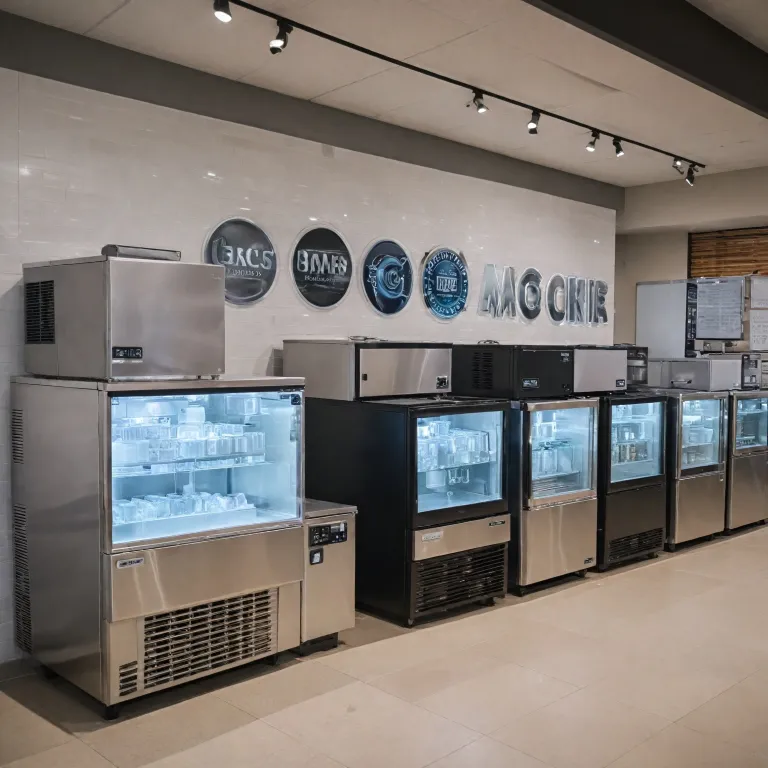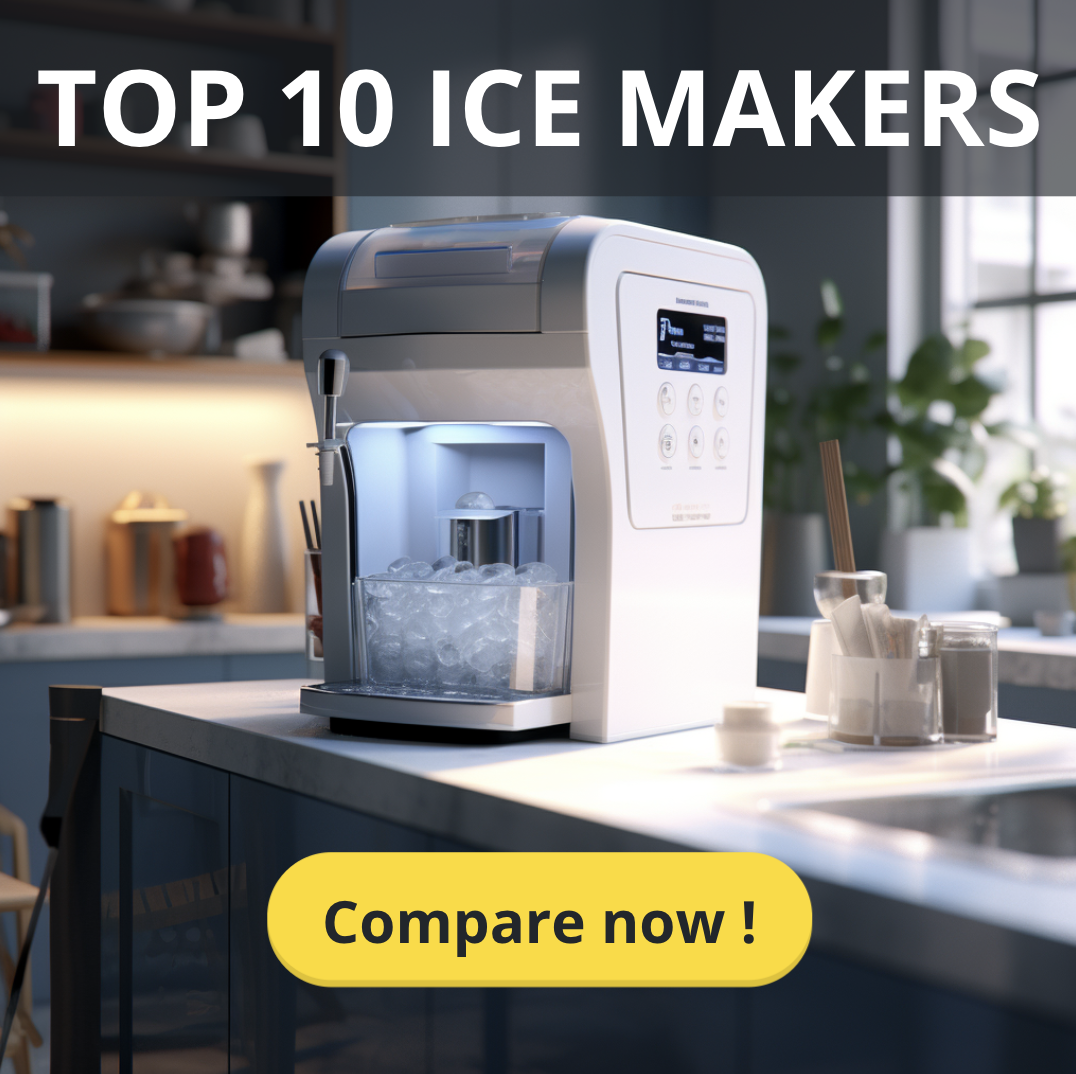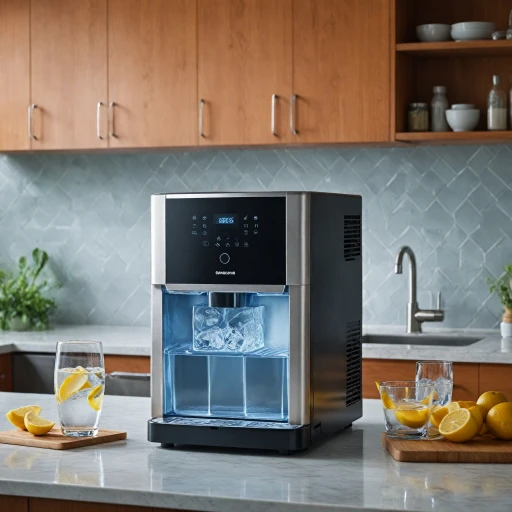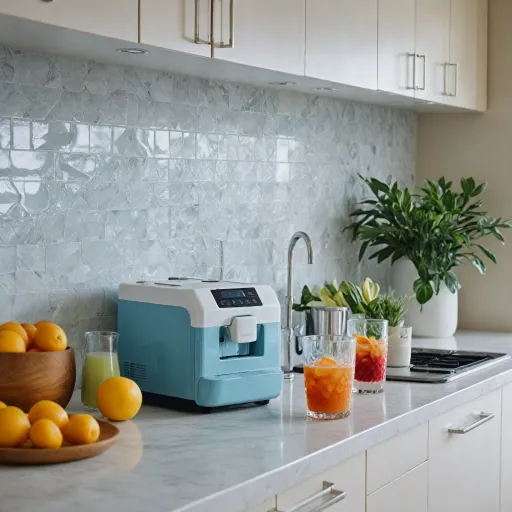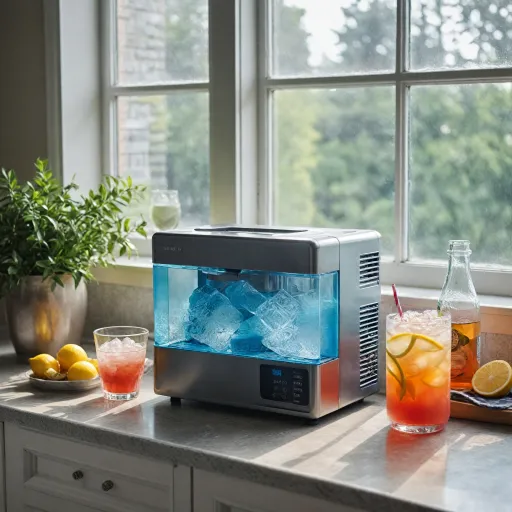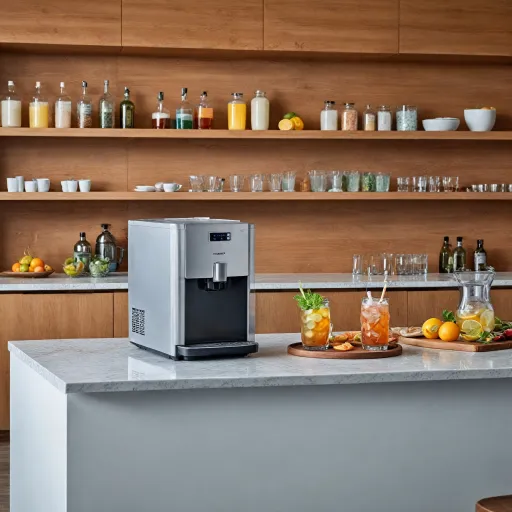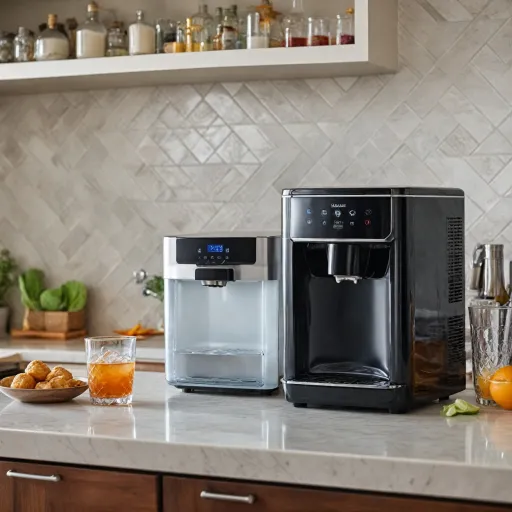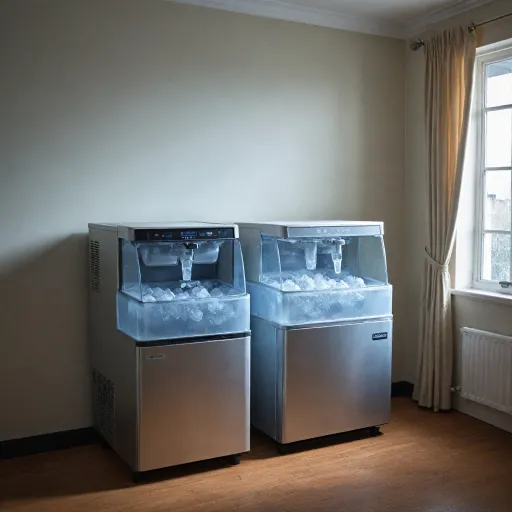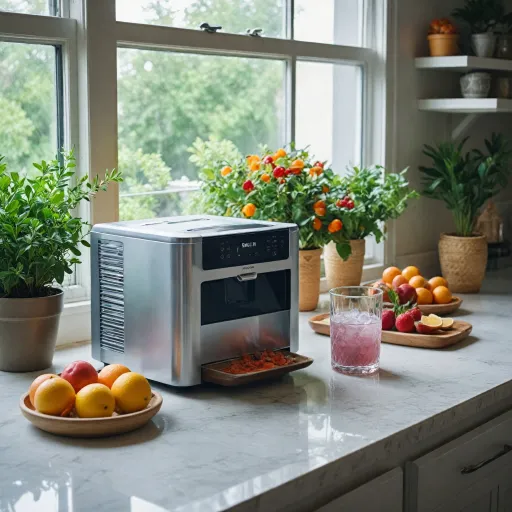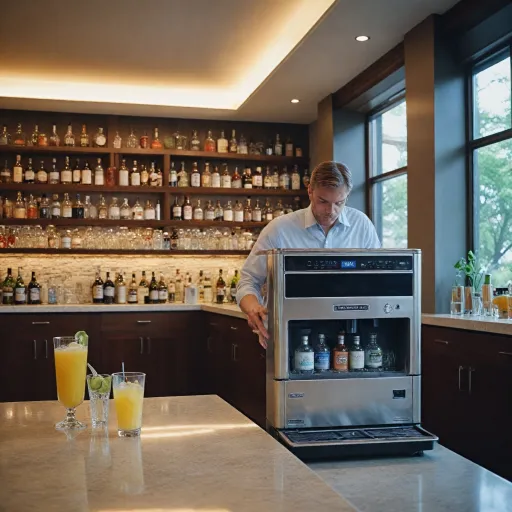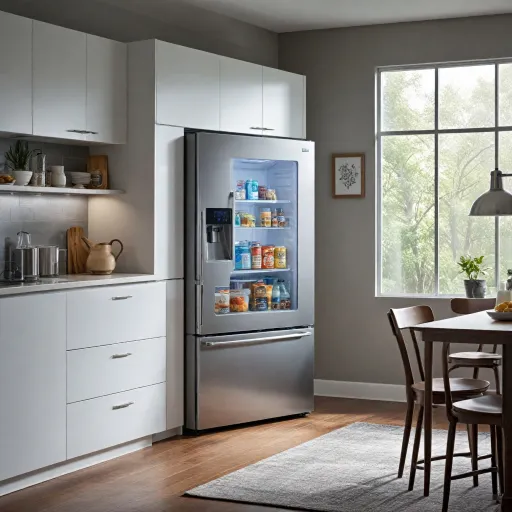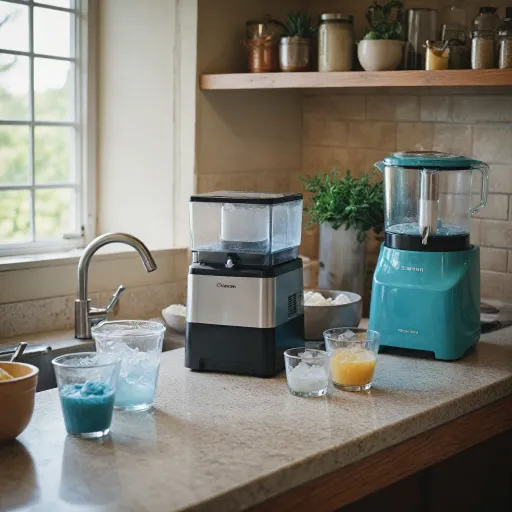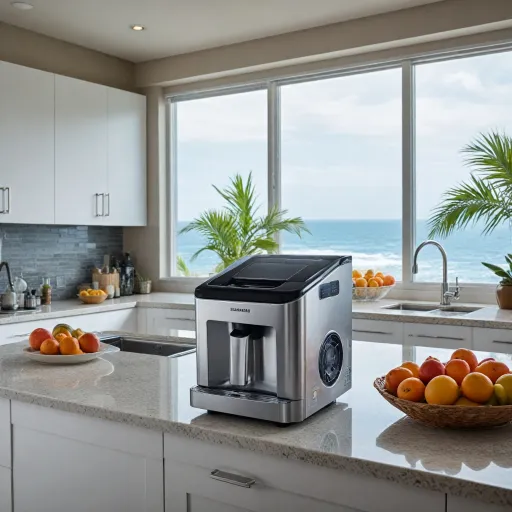
Understanding the Basics of Ice Machines
Ice Machines Demystified
Gaining a solid understanding of ice machines is essential before diving into the various types available. Ice machines are devices designed to create and store ice by freezing water. They have become indispensable in both residential and commercial settings by providing a steady supply of ice for a multitude of needs.
These machines come in various configurations, each catering to specific requirements. At their core, all ice makers use water and a cooling system to produce ice. The two primary methods for cooling are air-cooled and water-cooled, with each having distinct advantages depending on the environment and application. For example, water-cooled machines might be more suitable where ambient temperature is high, but they consume more water.
Commercial ice machines are designed for larger capacities and consistent output, often required in restaurants, bars, or any business needing a large volume of ice daily. These solutions can be categorized further into modular ice machines, undercounter ice makers, and freestanding ice machines, each designed with specific storage bin capacities and ice production needs in mind.
The ultimate guide to choosing a home pellet ice maker can provide additional insights for residential requirements, focusing on energy-efficient, smaller-scale machines that fit seamlessly into home kitchens.
Understanding these foundational elements will help you make informed decisions as you navigate through different types, key features, and maintenance tips in your ice machine journey.
Different Types of Ice Machines
Various Forms of Ice Machines
When it comes to ice makers, understanding the type of machine that best suits your needs is crucial. Ice makers are designed to produce different ice types, catering to both commercial establishments and home kitchens. The choice depends on the desired ice output, the available space, and the specific ice preferences—whether it’s for drinks, food preservation, or medical purposes.
- Modular Ice Machines: These are ideal for large-scale ice production, commonly used in commercial businesses. They are designed to sit atop a storage bin or a dispenser, providing flexibility in installation. Modular units often come with either air-cooled or water-cooled condensers, impacting energy efficiency and installation requirements.
- Undercounter Ice Machines: Perfect for smaller spaces like home bars or small cafes, these compact units combine both ice production and storage in one appliance. Despite their size, undercounter machines can deliver a substantial ice output per ice day.
- Freestanding Ice Makers: These are versatile machines that fit in both commercial and kitchen settings, equipped with a large storage capacity to ensure a continuous supply of ice throughout the day.
- Remote Condenser Models: Offering quieter operation, remote condenser units are mostly used in commercial setups. While installation might be more complex, they effectively reduce heat and noise in the production area.
Specialized Ice Types
Beyond choosing the right machine, it's essential to consider the specific ice types they produce:
- Crescent Ice: Known for melting slowly, this type is common in beverages.
- Nugget Ice: Popular for its chewable texture, ideal for soft drinks and cocktails.
- Flake Ice: Perfect for food displays and medical use, flake ice forms easily around items to keep them chilled.
By thoroughly understanding the varieties of ice machines and the specific ice types they produce, you'll be better equipped to select the perfect ice machine to fulfill your needs.
Choosing the Right Ice Machine for Your Needs
Consideration by Ice Output and Machine Location
When selecting an ice maker, it's essential to think about your specific needs in terms of ice output and where the machine will be placed. Understanding the amount of ice you need per day is crucial. For example, a large commercial business will require a machine with a high ice production capability, whereas a small kitchen may only need a compact machine.
Identifying the Right Type Based on Space and Usage
The type of ice machine you choose should also be influenced by the available space and usage. If space is limited, an undercounter ice maker or a modular ice machine with a storage bin might be ideal. On the other hand, if you need a machine capable of producing different ice types, including nugget ice, for various applications, a more versatile machine will be necessary.
Importance of Water and Cooling Systems
The water and cooling system used by the ice machine is another critical factor. Air cooled machines are a popular choice for many due to their efficiency and less water usage. However, in environments where heat is a concern, a water cooled system or a remote condenser might be more appropriate to ensure effective cooling. Energy consumption is another critical factor, which is why considering an energy star rated ice maker can be beneficial for reducing long-term operational costs.
Aligning Choice with Business or Personal Goals
Lastly, think about whether the machine will serve a personal kitchen or a commercial setting. Business-focused machines often require more robust output and sturdy designs, while personal ice machines can prioritize compactness and aesthetic integration. For those still unsure, this guide to crushed ice makers offers additional insight into choosing the perfect machine for varied needs.
Key Features to Consider in Ice Machines
Essential Features to Evaluate in Ice Machines
Choosing the right ice machine involves examining several key aspects that directly impact performance, efficiency, and suitability for your needs. Here's what to look for:
- Ice Production Capacity: Consider the daily ice demand of your business or household. Commercial settings often require machines with a larger output that can produce a significant volume of ice per day. For home use, something smaller may suffice. A balance between capacity and need ensures efficiency.
- Type of Ice: With various ice types like nugget ice, cube ice, and flakes, it's essential to choose a type that aligns with your specific use. Different needs require different ice textures and shapes, such as nugget ice for beverages or larger cubes for coolers and storage.
- Energy Efficiency: Selecting an Energy Star-rated ice machine can lead to substantial savings on electricity bills. These machines are designed to reduce energy consumption while maintaining high performance. A focus on energy efficiency supports sustainable business practices and eco-friendliness.
- Cooling Method: Ice makers can be air cooled or water cooled. Air cooled machines are generally less costly and easier to maintain, making them suitable for most kitchen environments. In contrast, water cooled units might be more efficient in hotter areas or where minimizing noise is critical. Remote condenser machines offer another alternative, enhancing cooling efficiency while reducing heat and noise in smaller spaces.
- Space and Installation: Consider the physical space where the ice machine will be installed. Modular ice machines offer flexibility in terms of storage bin placement, whereas undercounter and freestanding types require specific arrangements to optimize utility. Ensure there is adequate clearance for venting and maintenance.
- Storage Bin Capacity: Matching the storage bin capacity with the ice production rate is crucial. Opt for a storage bin that can accommodate peak usage without overwhelming the machine's production ability.
By prioritizing these features, you can ensure an efficient and effective ice-making solution tailored to your specific needs, whether for a bustling commercial kitchen or a home setting. Understanding the basics of ice machines and different types available will further streamline your selection process, allowing you to make a well-informed decision.
Common Challenges with Ice Machines
Common Issues You Might Encounter with Ice Machines
When investing in an ice machine, there are certain hurdles you might face. Understanding these challenges can help ensure your ice production remains efficient and trouble-free.- Inconsistent Ice Output: One of the most common complaints is fluctuating ice output. This can often be attributed to issues like poor water quality, incorrect machine settings, or inadequate water supply.
- Storage Capacity Limitations: Ensure your chosen machine aligns with your ice needs. If the storage bin isn't spacious enough or if your ice type requires particular storage conditions, you may need multiple machines or frequent ice removal.
- Condenser Types: Ice machines come with various condenser options, such as air or water cooled, and even remote condensers. Each type has its own set of potential challenges. For instance, air cooled machines might face efficiency issues in hot environments, while water cooled versions may demand more resources.
- Energy Consumption: Without proper management, energy costs can skyrocket, especially in commercial settings. Opt for an Energy Star-rated machine for better efficiency.
- Maintenance Needs: Regular maintenance is crucial for all ice makers to prevent breakdowns. Issues like lime scale buildup or clogged filters can occasionally surface if routine checks are overlooked.
- Business Impact: For commercial operations relying heavily on large ice output per day, any downtime can lead to significant business challenges. Therefore, choosing a reliable machine with minimal downtime and high ice production is essential.
Maintenance Tips for Longevity
{"Essential Maintenance Practices for Your Ice Maker
Proper maintenance is key to ensuring the longevity and functionality of your ice machine. Different types of ice makers, whether they are nugget ice or large commercial machines, require specific maintenance tasks to keep them producing ice effectively. Here are some crucial tips to help you maintain your ice machine in peak condition:
- Regular Cleaning: Frequent cleaning is vital, especially for machines with a water line connection. Mineral deposits and impurities can accumulate, impacting ice output. Schedule regular cleanings to prevent this.
- Check and Replace the Filter: Filters help in reducing impurities in the water used for ice production. It’s crucial to check and replace them regularly to ensure clean, high-quality ice.
- Inspect the Condenser: Whether your machine uses an air cooled or water cooled condenser, it’s essential to routinely inspect it for any blockages or dirt buildup. This keeps your machine running efficiently.
- Monitor Energy Usage: For commercial ice machines especially, keeping an eye on energy consumption can prevent unexpected spikes in utility costs. Ensure your machine is an energy star model for optimized performance.
- Storage Bin Upkeep: The storage bin needs regular attention to prevent build-up of bacteria and mold. Keeping it clean will ensure the safety and quality of the ice stored.
- Tackle Common Problems: Be aware of common challenges such as fluctuating ice production rates or unusual noises that could indicate underlying issues. Address these promptly to avoid more significant problems down the line.
By implementing these maintenance strategies, your ice maker can remain in excellent working order, providing you with a steady output of ice every day. Remember, a well-maintained machine not only serves your business better but also ensures that you get the most from your investment.
-logo-retina.jpg)
